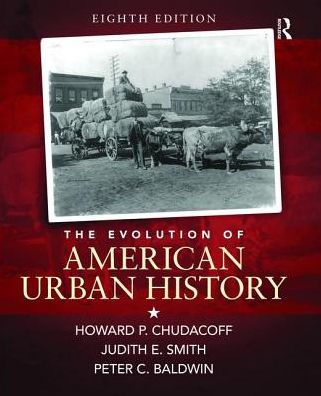
The Evolution of American Urban Society
288
The Evolution of American Urban Society
288Hardcover(8th ed.)
-
PICK UP IN STORECheck Availability at Nearby Stores
Available within 2 business hours
Related collections and offers
Overview

Product Details
| ISBN-13: | 9781138474154 |
|---|---|
| Publisher: | Taylor & Francis |
| Publication date: | 08/25/2017 |
| Edition description: | 8th ed. |
| Pages: | 288 |
| Product dimensions: | 7.50(w) x 9.25(h) x (d) |
About the Author
Read an Excerpt
Since 1975, when The Evolution of American Urban Society was first published, American cities and the scholarship about the history of American cities have undergone consequential changes. Yet at the same time, there have been vital consistencies in both urban life and the scholarly focus on how American urban society has evolved. Throughout almost three decades, the authors of this book have maintained their focus on the social history of urban life, with special attention to the unfolding political and economic processes that have shaped the development of cities and the lives of urban dwellers. Equally important have been the ways that the actions of urban dwellers—the powerful and the ordinary—have influenced the course of urban history.
For this, the sixth edition of The Evolution of American Urban Society, we have updated the scholarship and bibliographies for each chapter, paying particular attention to issues of race, ethnicity, gender, the built environment, regional differentials, and emerging cultural forms such as rock and rap music. Wherever possible, we have added perspectives on the environmental impact of cities and suburbs. The chapters on the post-World War II cities offer new attention to the new racial and ethnic mix produced by the most recent immigration trends and to the re-institutionalization of segregation resulting from public housing development and highway policies. As well, we have tried to be sensitive to the effects of concentrated poverty in inner-city neighborhoods and the costs of hardening barriers between city and suburb. The final chapter has been expanded to take into account issues relating to the presidential administration of George W. Bush and to the consequences of the terrorist attacks of September 11, 2001.
Once again, we owe special thanks to Pembroke Herbert for her valuable picture research and to Jim O'Brien for his efficient indexing. We also wish to acknowledge the insightful critiques offered by Mark Newman, National Louis University; Abel Bartley University of Akron; Anne Brophy Georgia State University; George Lubick, Northern Arizona University; and Jacob Judd, CUNY/Lehman College. Howard Chudacoff thanks Nancy Fisher Chudacoff for guidance and inspiration, and Judith Smith thanks Larry Blum, and Ben, Sarah, and Laura Blum-Smith for their insights and support.
